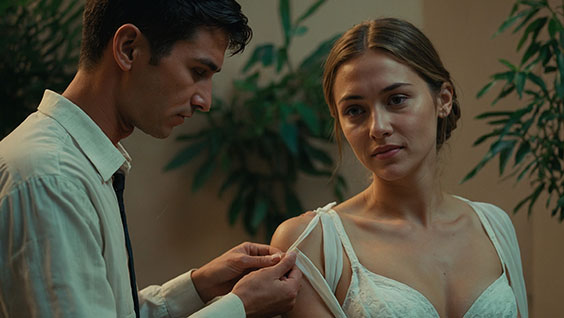Erotic literature often dwells on desire, shame, or lust. Yet one feeling tends to remain in the background: awe. It is that blend of astonishment, respect, and inner trembling that makes the breath catch and the body feel both small and receptive. In erotic scenes, awe can be powerful, because it frames beauty, vulnerability, and intensity at once.
Bodily signs of awe
Awe shows itself physically. Breathing becomes shallow or pauses for seconds, while the chest remains tense. The skin can feel warm and cool at the same time, a shiver running down arms, belly, or thighs. Pupils widen, the body freezes for an instant before responding with a slight tremor. Physiologically, awe is close to arousal, but it is rooted in being overwhelmed rather than in pure lust.
Internal reactions
Experiencing awe makes a person feel smaller and more open at once. The sense of self recedes, while the presence of the other grows. In erotic moments, the partner’s body appears larger, more monumental, almost sacred. Mentally, awe oscillates between humility, fear-tinged excitement, and a sense of transcendence. This ambivalence makes awe particularly rich for erotic writing.
Example: The dancer
A man sits in the audience of a small theater. The lights fade, and a woman enters the stage. She wears only a translucent dress that reveals her breasts, the nipples visible in the spotlight. Her abdominal muscles tense as she raises her arms. As she spins, the fabric shifts, exposing the curve of her bare buttocks, firm and unshielded. The man’s breath catches. More than desire grips him: a humble reverence for the ease with which she has turned her nakedness into art.
For you as writers: In such scenes, focus on the observer’s experience. Don’t just describe what he sees. Show how his body reacts—breathless, frozen hands, the sense of being small before something immense.
Example: The first unveiling
A student stands in a dimly lit bedroom. She slowly unbuttons her blouse. Beneath the fabric, pale skin emerges, the line between her breasts glistening with sweat. When she removes her bra, her breasts fall free, fuller and heavier than he had imagined. The nipples are dark, tightened with tension. The man opposite her barely dares to breathe. He feels not just desire but awe, as though he had stepped into a cathedral where every sound would echo too loudly.
For you as writers: Work with contrasts. Place the intimate physical description beside the inner tremor of the observer. Lust blends with silence; eroticism with reverence.
Awe between partners
Awe also arises in mutual encounters. When a woman sees her lover’s penis for the first time, she may be struck by its size or shape. Her hand hesitates, fingers trembling as she draws back the foreskin. Not just lust but respect fills the moment. Likewise, when a man spreads his partner’s labia, he sees not only vulva and clitoris but also an impression of vulnerable depth. Facing the other’s intimacy can trigger awe even more strongly than desire.
Writing tip
Use awe as a dramaturgical tool. It slows the scene, makes characters pause, and gives readers room to feel. Instead of piling up quick actions, linger on a single instant where body and mind freeze. Avoid judgmental language. Write with precision, sensual detail, and restraint. Let the reader experience the tension that lies in wonder.
Writing Prompt
Write a scene where a character sees another person’s naked body for the first time. Describe not only what is revealed but also how awe changes the gaze, the breath, and the thoughts of the observer.

